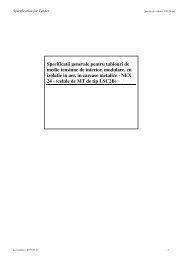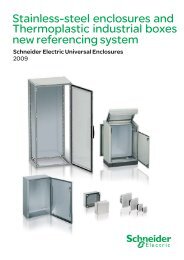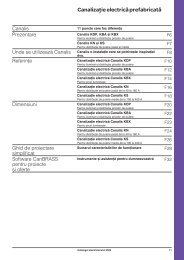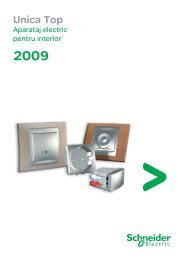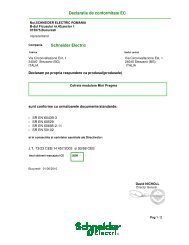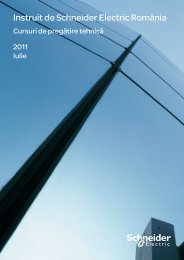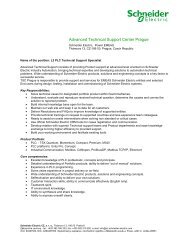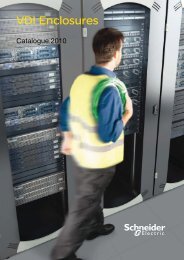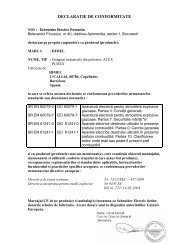Making permanent savings through Active ... - Schneider Electric
Making permanent savings through Active ... - Schneider Electric
Making permanent savings through Active ... - Schneider Electric
You also want an ePaper? Increase the reach of your titles
YUMPU automatically turns print PDFs into web optimized ePapers that Google loves.
<strong>Making</strong> <strong>permanent</strong> <strong>savings</strong> <strong>through</strong> <strong>Active</strong> Energy Efficiency<br />
The Current Situation<br />
Energy is consumed in a broad variety of ways<br />
across all sectors of life, from the provision of<br />
vital resources such as water, oil, and gas, to<br />
the lighting and heating in homes and the power<br />
required by industry and commerce. Much of that<br />
energy is consumed usefully, but huge amounts<br />
are wasted every day. It is the waste or ineffi cient<br />
use of energy that must be addressed.<br />
This white paper explores every aspect of the use<br />
of electricity and its impact on the environment.<br />
With greenhouse gas emissions in sharp focus<br />
around the world, the time has come for everyone<br />
to take action to economize on energy use by the<br />
intelligent application of technology to bring about<br />
<strong>Active</strong> Energy Effi ciency.<br />
At a European level, the Energy Performance in<br />
Buildings Directive (EPBD) has been recasted.<br />
This requires all buildings — including in the<br />
residential sector — to have energy ratings, similar<br />
to those seen on consumer white goods today,<br />
and to display these ratings in the building’s public<br />
areas or, in the case of residential buildings, within<br />
the documentation about the property. Some EU<br />
governments have stated that they expect an<br />
average 25% reduction in energy consumption<br />
from the introduction of this bill.<br />
As far-reaching as the legislation is, perhaps the<br />
biggest impact on businesses is the steep rise in<br />
the cost of energy. This poses a big problem for<br />
businesses as their profi t margins are squeezed<br />
and they are faced with the dilemma of whether<br />
to take the cut on their bottom line or to pass<br />
the cost increase <strong>through</strong> to the prices of their<br />
products and services, and therefore risk<br />
being uncompetitive.<br />
World Trade Index (WIT) implied volatility evolution<br />
40.0%<br />
37.5%<br />
35.0%<br />
32.5%<br />
30.0%<br />
27.5%<br />
Sources : US. EIA. CME Group<br />
Trade dates<br />
Dec-10 Contract month<br />
%<br />
15-Jan 10-Feb 8-Mar 3-Apr 29-Apr 25-May 20-Jun 16-Jul 11-Aug 6-Sep 2-Oct 28-Oct<br />
Additional price impact of the cost increase to the electricity<br />
producer in selected OECD+ countries resulting from the CO 2<br />
price in the 450 Scenario.<br />
Dollars per MWh<br />
120<br />
100<br />
80<br />
60<br />
40<br />
20<br />
CO 2<br />
price impact<br />
on fuel consumed<br />
Subcritical<br />
coal plant<br />
Supercritical<br />
coal plant<br />
More advanced<br />
coal plant<br />
Gas CCGT<br />
plant<br />
0<br />
-20<br />
-40<br />
Year:<br />
CO 2<br />
price:<br />
2015<br />
$20<br />
2020<br />
$45<br />
2025<br />
$75<br />
2030<br />
$105<br />
2035<br />
$120<br />
Reduced<br />
fuel price<br />
Net CO 2<br />
price<br />
impact<br />
Source = IEA - World Energy Outlook 2010<br />
White paper on Energy Efficiency - 7



